The Maasai are one of Africa’s most recognisable cultural groups, reputed to kill lions with their bare hands and drink warm blood tapped from a cow. But do they really? On a newly launched Airbnb Adventure to a Maasai village, you can ask them yourself.
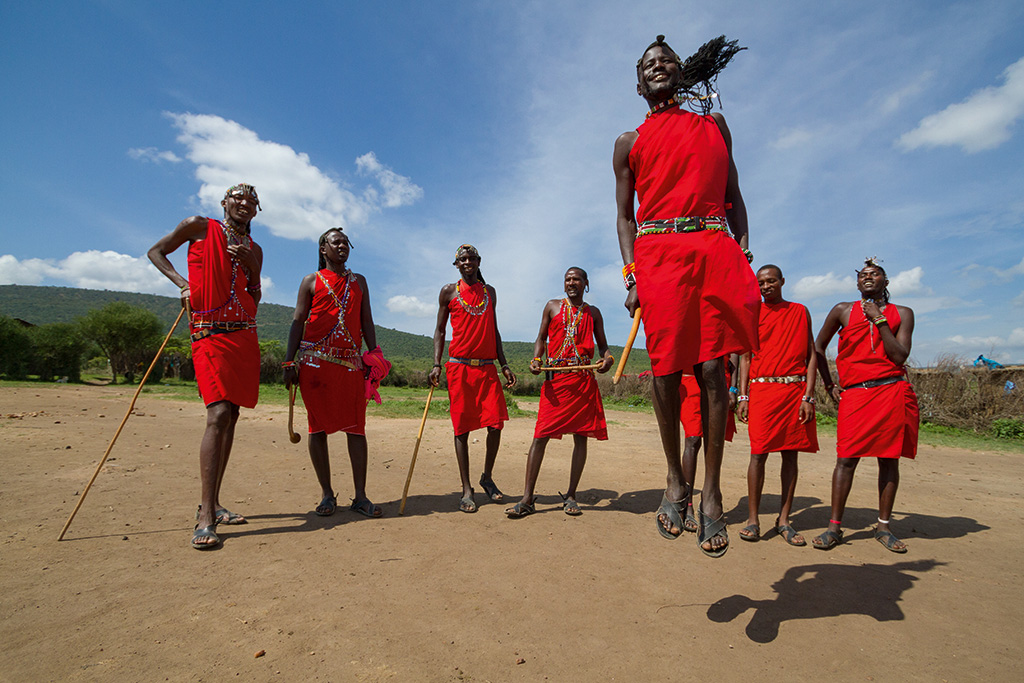
The signature Maasai adamu, or jumping dance, is performed at coming-of-age ceremonies to welcome young men to the next stage of their lives as warriors. Their athletic leaps are also not lost on potential brides. Image: Catherine Hofmeyr
My name is Nasha and I am a Maasai woman – at least for a day. In Maa it means ‘the lady who brings the rain’. And I did – in the dry season nogal – accompanied by a purple thunderstorm that lashed Oseki Maasai Mara Camp on the evening of my arrival. Oseki is owned by Dennis Parmuat, a born-and-bred Maasai morani (warrior) since the age of 10, and an ace animal tracker. He and his partner, Anne Blom, were my hosts for three days during an Airbnb Adventure Maasai experience in south-western Kenya.
Kenya has over 50 tribes, but the Maasai were the dominant people when the British arrived at the beginning of the 20th century. To this day they have maintained many of their traditions and lore. But as a nomadic, pastoral people they fared very badly at the hands of British colonial administrators, who stripped them of the most fertile cattle grazing and made trekking in search of new pasture virtually impossible. (It was also the British who spelt Maasai incorrectly with one ‘a’ that’s stuck in some official nomenclature.)
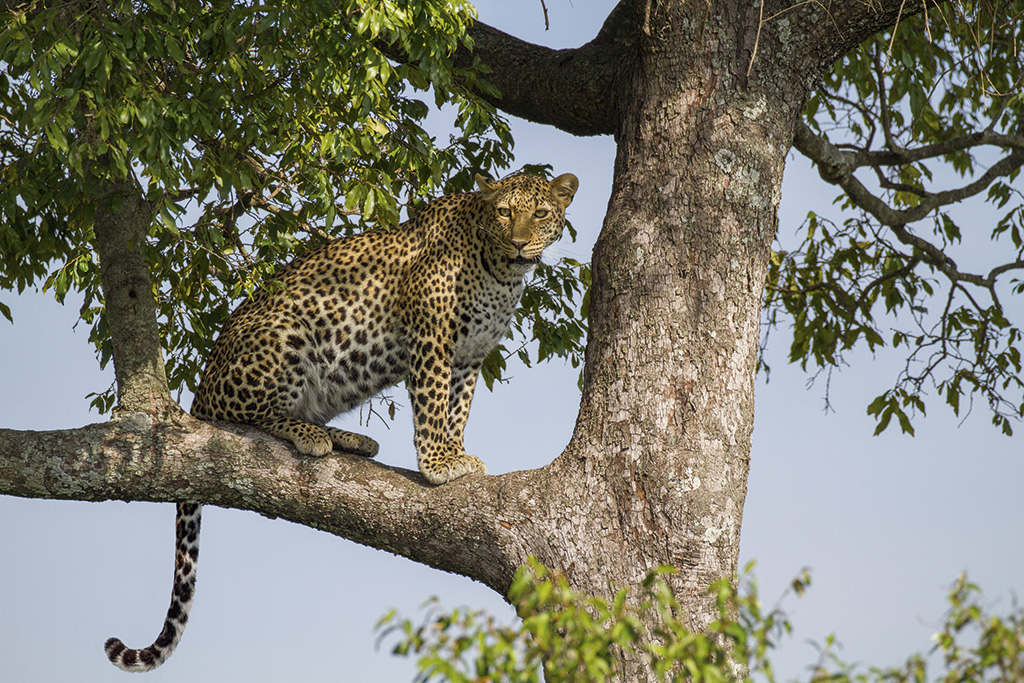
A soon-to-be-mama in the Masai Mara. Image: Catherine Hofmeyr
Ewangen, below Oseki Camp, is now a permanent village for an extended family and their animals. At the enkang of 10-odd huts enclosed by thorn bushes, I was met with ‘Supa’ (hello), handshakes and the leaping warrior dance, while the women gave a more sedate choral welcome. In earlier times, a young Maasai had to kill a lion to become a morani, but that’s not conservation-cool these days, so a lion headdress has to suffice at the ceremony. I learnt all this from my Maasai guide, the delightful, dreadlocked ‘Jackson’ Ole Lepore (‘We all have a Western and Maasai name’), who explained the cultural practices as we strolled about. Do they still drink blood? ‘Yes, at ceremonies,’ he confirmed.
I couldn’t be a Maasai without the colourful attire, so was ushered into one of the huts – they’re built by the women from mud mixed with cow dung on a framework of sticks – and emerged in a bright yellow shuka and enkonong (sheet and robe) and draped in beadwork. The little toddlers were fascinated by the new ‘elder wife’. I spent a few hours with the village women fulfilling my duties, carrying water from the spring and learning beadwork. We sat, cross-legged on the ground, while the children and chickens scurried about our feet, cows lowed in the pen behind us and flies began their unrelenting torture. I fashioned a few simple bracelets of my own, but you can buy more intricate keepsakes made by my ‘teachers’.
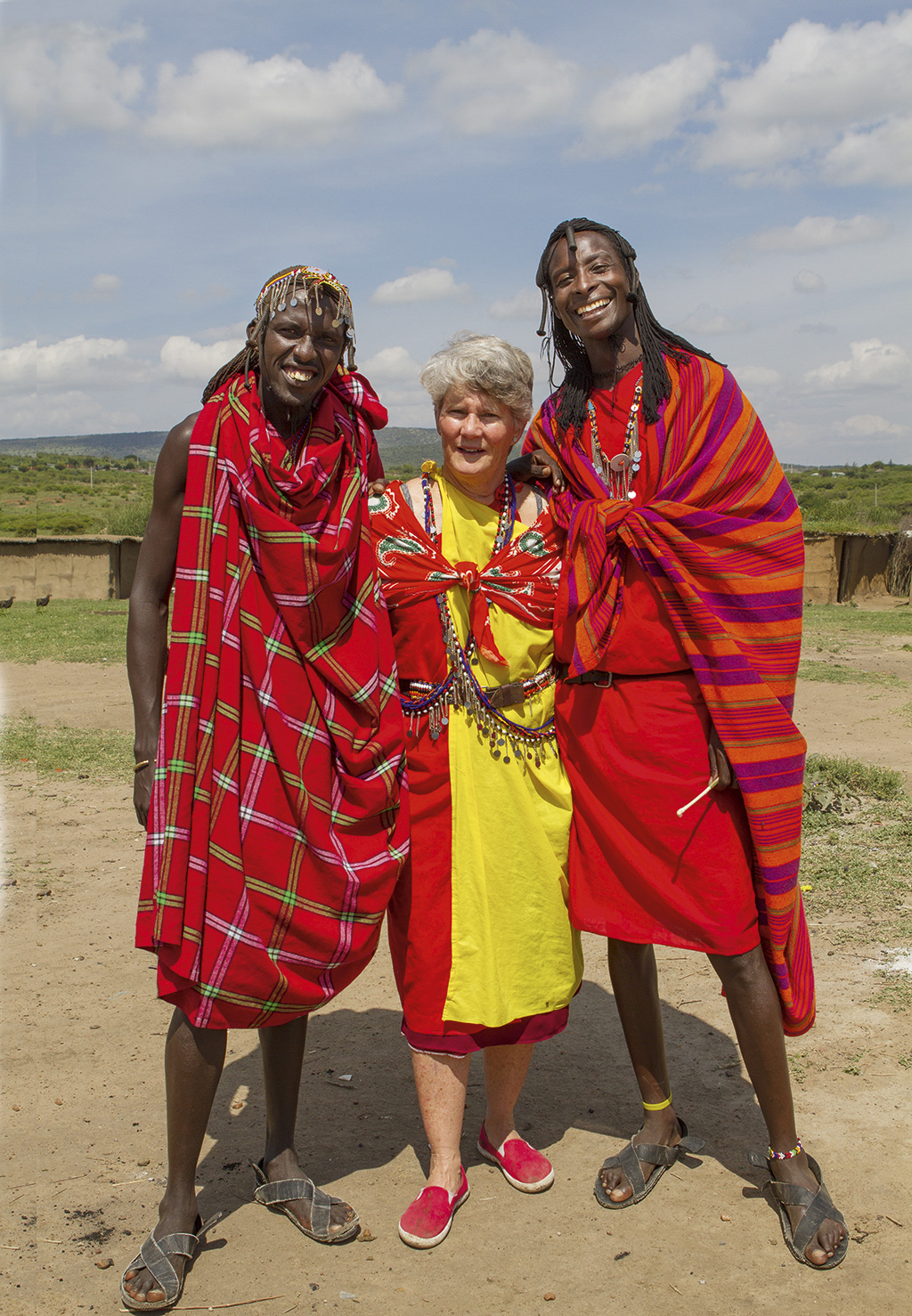
Guide Jackson Lepore, on the right. Image: Catherine Hofmeyr
Part of me would have liked to stay the night in one of those sparse mud dwellings, where chickens are kept under the bed to safeguard them from leopards at night. But the part of me that had flown overnight from Cape Town was quite thankful for the simple comforts like hot showers and beds with mattresses at Oseki Camp. So, with an ‘Ashe oleng’ (thank you) to Jackson and family for showing me a glimpse of their lives and proud heritage, I set off up the hill.
The next evening I joined Swiss guests and two warriors, Ledama Naeku and Ole Sumare, for a bush walk to learn more Maasai lore – like that you can chew the bark of the black-backed acacia to get water, and rub baby goats with the leaves of night black-jack to keep off the flies. Ledama pointed out giraffe prints in the sand, and demonstrated the abrasive properties of the prolific sandpaper tree (oseki, which also means ‘blessed’ in Maa). We all tried archery, with genuine poison-tipped arrows. The Swiss fared far better than I did – just why I couldn’t Tell! A herd of zebras trotted past, an almost full moon rose behind a giant euphorbia tree as the sun slipped through thorny acacias, and I was walking the wilds of Africa in the company of two Maasai warriors. Somewhere distant a hyena seemed to find that funny; I found it glorious.
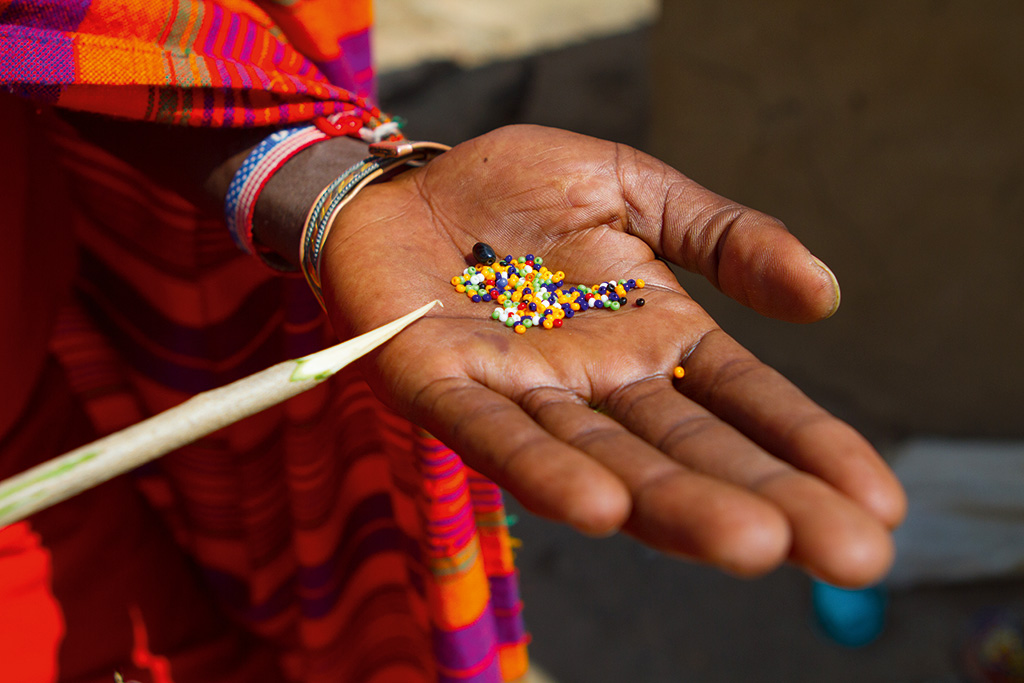
Bead colours have different meanings. Image: Catherine Hofmeyr
You can’t stay at Oseki and not do at least one drive into the Masai Mara National Park, virtually on the doorstep. ‘What do you want to see’? asked Kupai Lebati, my dapper moroni guide – complete with spear in one hand and Samsung Galaxy in the other – as we drove through the gates. ‘Oh, cheetah, if you can, and I always love a good leopard,’ I said. He nodded knowingly and we were off into green plains scattered with zebra, thousands of wildebeest – they were on the brink of migrating – and a Maasai giraffe (one of four species found in Kenya) catching the rising sun. Further on, lappet-faced vultures were stripping the remains of a wildebeest carcass, watched from a safe distance by a topi and a herd of Thompson’s gazelles.
Later Kupai pulled up in a thicket with two other vehicles. ‘Leopard,’ he pointed to a very untidy hammerkop nest. Perched atop the Mara-style mattress was a sleeping feline. And so she remained. The two other vehicles left. We waited. In time she raised her head, then stood into a perfect kitty stretch, licked a paw, and made her way through the tree foliage and slowly down the trunk.
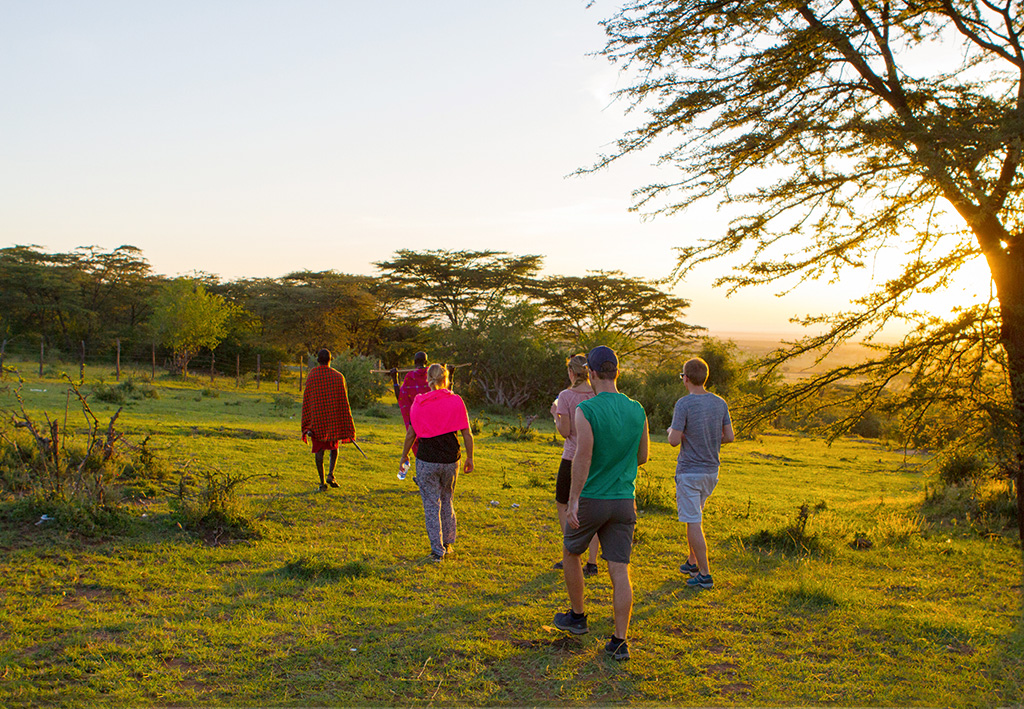
A bush walk in North Mara Conservancy. Image: Catherine Hofmeyr
Further, the day was filled with lions, noisy gnus, hyenas and giraffes. We stopped for a picnic lunch under a flat-topped acacia. Hey, I thought, I’m sitting on a checked blanket with a Maasai warrior at my side, in one of Africa’s most awe-inspiring game sanctuaries, eating avo sarmies as a breeding herd of ellies strolls by. The matriarch tested the air with her trunk to check for danger – or was it the whiff of avo?
After lunch we found four cheetah brothers sleeping under a tree. My warrior, and the Mara reserve, had certainly delivered.
Plan Your Trip
Getting There
It’s about six hours’ drive from Nairobi to Oseki Camp in the North Mara Conservancy. The camp can arrange a transfer (R2,300 one way for two people, R3 ,000 for three or four) or they will collect you from Narok if you take public transport. The cheapest flights to Nairobi are on Ethiopian Airlines, via Addis Ababa, from Cape Town or Joburg, from R4, 500 pp return. ethiopianairlines.com

Need to Know
South Africans don’t need a visa for Kenya. Kenyan shillings are available from ATMs in most towns; take dollars for park entry ($80).
The Airbnb Adventure
This includes two nights at basic but lovely Oseki Maasai Mara Camp, with all meals, tea, coffee and water included. You’ll also have the village experience and go on a bush walk with Maasai warriors. R3, 198 per person.
airbnb.com/d/adventures
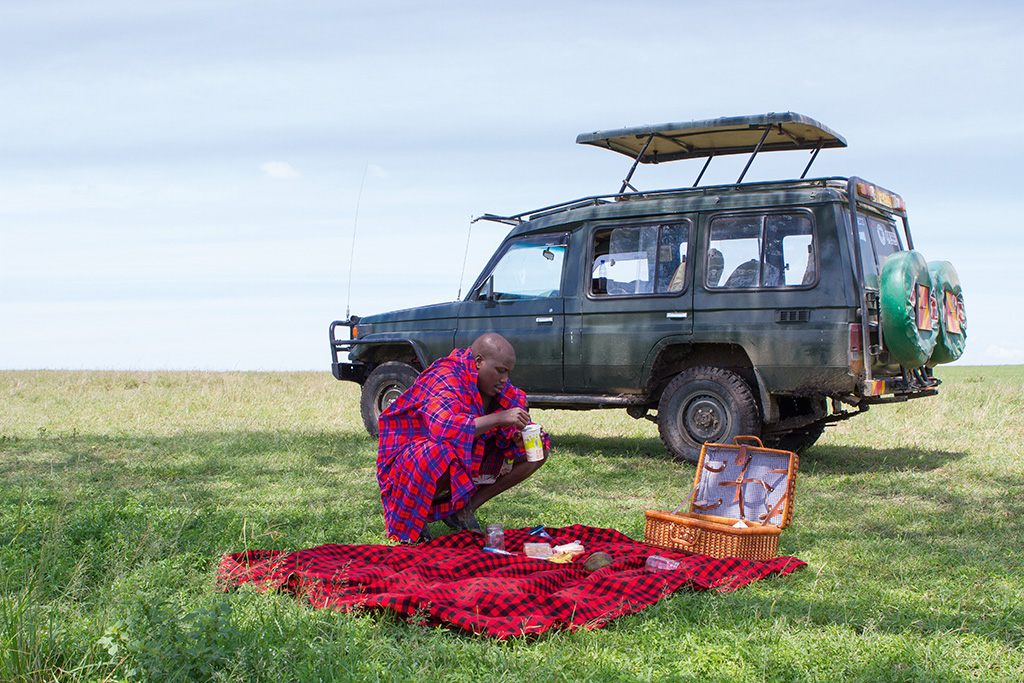
Animals are a Maasai’s wealth – Dennis Parmuat takes stock. Image: Catherine Hofmeyr
Do This
Add to your Airbnb Adventure at Oseki by helping out at the village school. Or book a cattle-driving experience (R300 pp) and a three-hour elephant-tracking walk (R760 pp). It’s pricey for South Africans, but a game drive into the Masai Mara is a must. From R1,150 pp for a half day and R2 ,300 for a full day for two. Park entry is an extra R1,220 pp. osekimaasaimaracamp.com
Airbnb’s inside track on extraordinary places
In May 2019 Airbnb launched a new arm to its online travel and booking site – Airbnb Adventures. It’s designed to take Airbnb Experiences a step further by immersing guests in cultures and communities during multi-day trips. The online booking service hooks you up with a host who has ties to the community. The host, with local knowledge, provides your bed and board and handles all the ground logistics, curating an experience that’s off the usual tourist route, and often involves home stays. Groups are kept small and trips range from two to 10 days. There are 200 adventures and they’re not just for adrenaline junkies. Trips range from budget to shoot-the-lights-out, and from scary exploits to sedate cultural immersion and lots for foodies. You’ll find the following, and more at airbnb.com/d/adventures.

Lions reputedly fear the Maasai, so it’s a good thing to have Kupai Lebati as a protector while picnicking in the Masai Mara. Image: Catherine Hofmeyr
Africa
- Sail on a catamaran from Hout Bay to the Langebaan Lagoon – R9,700
- Hike up Mount Toubkal, the highest peak in North Africa, from Marrakech – R2,407
- Island-hop under sail off Madagascar – R46,911
- Track lions on foot with Samburu warriors in northern Kenya – R7,848
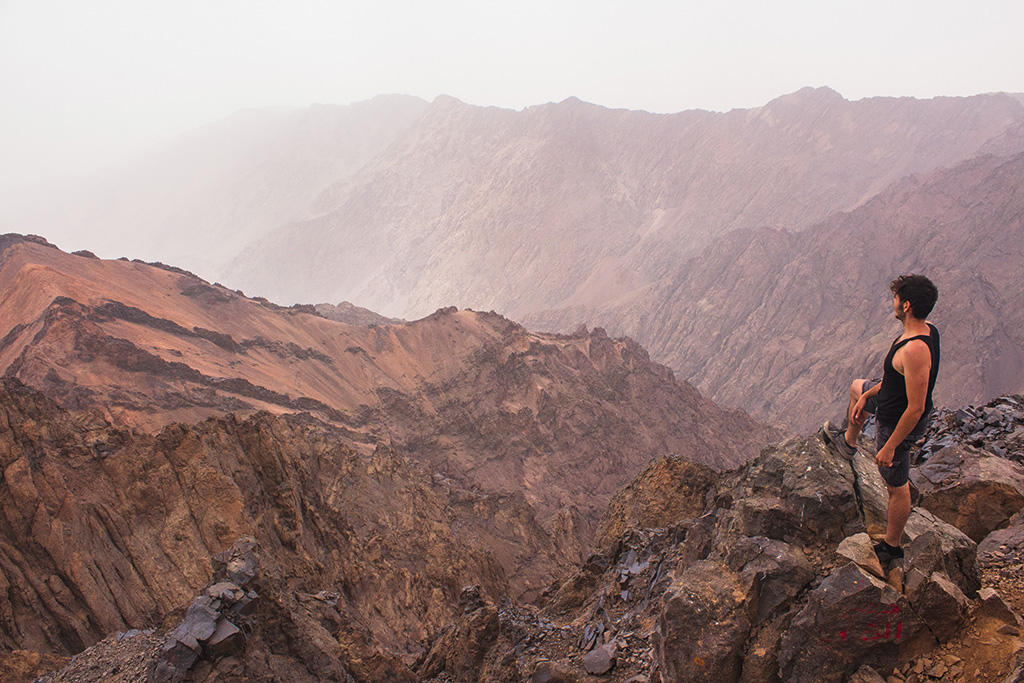
Mount Toubkal. Image: Supplied/Airbnb
The World
- Make chocolate in Jamaica – R15,265
- Follow Mexico’s coffee trail – R5,101
- Tuk-tuk through Thailand – R25,788
- Do a mystical Oman desert trek – R15,327
- Hunt with eagles on horseback in Mongolia – R9,731
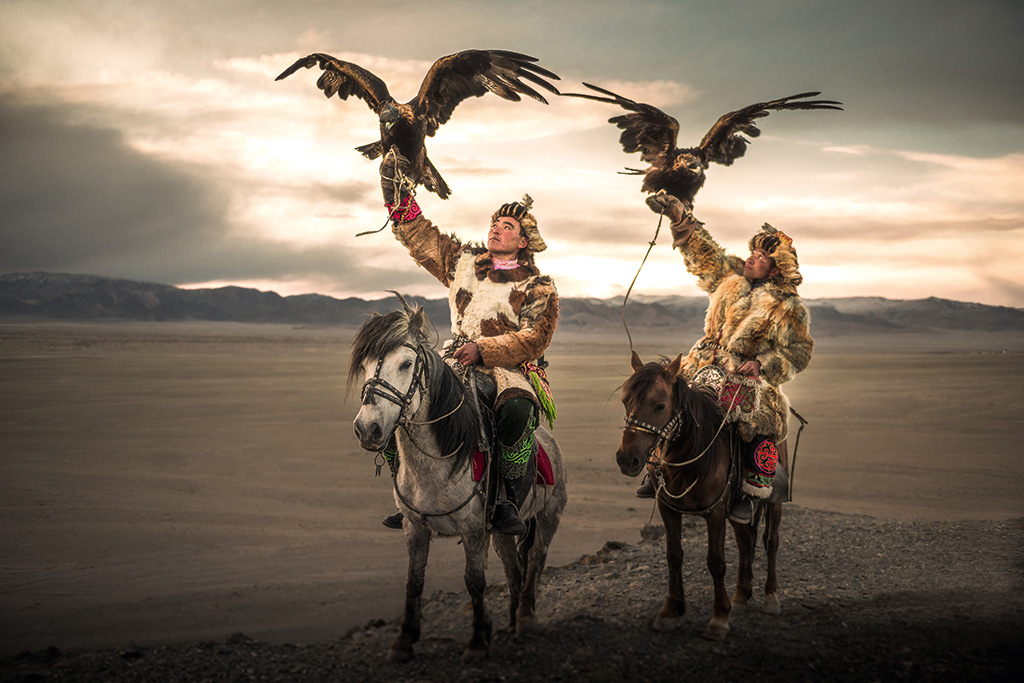
Mongolia. Image: Getty
Words & Photographs by Catherine Hofmeyr
You may also like
Related Posts
There’s a sublime stretch of coast between the Overberg and main Garden Route mostly bypassed...
read more
The air is thinner at 2 590 metres, not quite elastic enough to contain sound so...
read more
Driving over the Berg River on Carinus Bridge, you’d probably dismiss Velddrif as just another...
read more